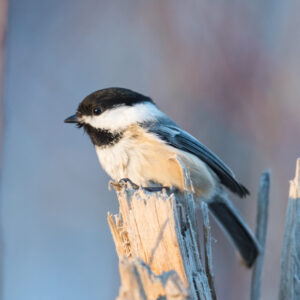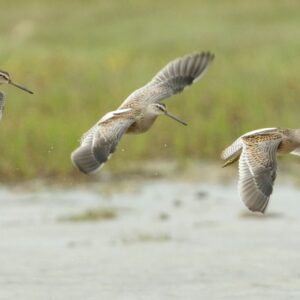What’s the difference between a seal and a sea lion?
Thank you to our Nature Network partners, UBC Marine Mammal Research Unit (MMRU) & Ocean Pollution Research Unit (OPRU), for sharing this month’s blog.
Seals and sea lions both belong to a group of marine mammals called “pinnipeds”, meaning fin- or feather-footed in Latin. True seals have ear holes, but no ear flaps. Included in this group are species like the Harbour seal, Hawaiian Monk seal, Ringed seal and Harp seal.
Sea lions, on the other hand, have external ear flaps and are grouped with the eared-seals. These flaps turn downward so that water doesn’t get into the animal’s ears. The eared-seal family includes 6 species of sea lions and 10 species of fur seals.
There are other differences between true seals and sea lions. On land, seals can’t walk, and must undulate on their bellies, whereas sea lions use their large front and back flippers to “walk”.
In Canada (marine regions of British Columbia in the Northeastern Pacific), we have two species of sea lions: Steller sea lion (Eumetopias jubatus) and the California sea lion (Zalophus californianus).
Divers and Schmoozers
Sea lions, like seals, are impressive divers. According to the U.S. National Oceanic and Atmospheric Administration, the deepest dive documented for a Steller sea lion is about 427 metres (1,400 feet). California sea lions are not far behind, at about 300 metres. However, sea lions rarely dive to such extreme depths because most of their food occurs in waters less than 100 metres. The animals have an amazing ability to collapse their lungs and store extra oxygen in their blood, which keeps nitrogen out of the bloodstream and helps stave off decompression sickness (“the bends”, as it’s known to human divers).
Sea lions are among the most social animals on earth, gathering in groups of up to 1,500 individuals called herds or rafts. That brings us to another difference between seals and sea lions: the latter are generally noisier, bellowing, barking (California sea lions) and roaring (Steller sea lions). True seals grunt, moan and growl, but not quite with the same volume as their flippered cousins.
Indicators of Ocean Health
As top predators controlling the top-down process in food webs and performing important ecological functions in the marine and coastal ecosystem of Canada’s west coast, Steller sea lions and California sea lions can be considered “canaries in the coal mine”. They can help scientists to understand and track the environmental conditions and health status of our changing oceans — serving as sentinels of the negative impacts of ocean pollution.
Threats
Recent research has shown the presence and moderate concentrations of persistent organic pollutants (POPs) such as polychlorinated biphenyls (PCBs) and polybrominated diphenyl ethers (PBDEs) – chemicals used as flame retardants – in Steller sea lions from the Strait of Georgia, BC (Alava et al., 2012). Since they are high up in the food chain and contain substantial fat or lipid tissues in their body, these POPs can bioaccumulate in their bodies over time with little metabolic capacity to eliminate these organic contaminants.
The impact of plastic pollution also affects sea lions, causing injuries and trauma. For example, marine plastic debris, such as abandoned and derelict fishing gear, ropes, and long-lines entangle and cut the body (e.g. neck) of Stellar and California sea lions in BC. The Vancouver Aquarium via the Marine Mammal Rescue Centre has observed, rescued, treated, released and monitored injured sea lions impacted by anthropogenic marine debris such as ocean plastics.
Natural threats include predation by Killer Whales, disease, and fluctuating prey populations. Climate change is also a factor, since warmer waters will affect populations of fish, the principal prey of sea lions.
About the UBC Marine Mammal Research Unit
The Marine Mammal Research Unit (MMRU) conducts research of the highest standards to enhance marine mammal conservation and reduce conflicts with human uses of our shared oceans. It is integrated within the the University of British Columbia’s Institute for the Oceans and Fisheries and works with other departments and institutions, combining specialties in a coordinated effort to provide independent research and advice on matters related to marine mammals. Members investigate interactions between humans and marine mammals, marine mammals as indicators of ecosystem change, and the natural history, biology and conservation of marine mammals.
We cannot survive without the ocean; it provides us oxygen to breathe, puts food on our plates, helps us fight climate change, and supports vibrant coastal communities. Become an Ocean Defender.
Sources:
https://www.sciencedirect.com/science/article/abs/pii/S0045653512004766
https://www.fisheries.noaa.gov/feature-story/it-seal-or-sea-lion
https://animals.sandiegozoo.org/animals/sea-lion
https://www.science.org/content/article/scienceshot-deep-diving-sea-lions-squeeze-air-out
https://www.australiangeographic.com.au/news/2012/09/sea-lions-how-they-beat-the-bends/
https://oceanservice.noaa.gov/facts/seal-sealion.html
https://www.pbs.org/wnet/nature/blog/sea-lion-fact-sheet/
https://www.fisheries.noaa.gov/species/steller-sea-lion
https://mmru.ubc.ca/biology/steller-sea-lion-fast-facts
https://mmru.ubc.ca/biology/california-sea-lion-biology-fast-facts
https://www.nps.gov/redw/learn/nature/true-seals-versus-fur-seals-and-sea-lions.htm



